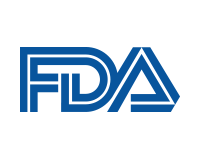United States Department of Health and Human Services

United States Food and Drug Administration: Publications
Date of this Version
2017
Document Type
Article
Citation
Food Safety in China: Science, Technology, Management and Regulation, First Edition. Edited by Joseph J. Jen and Junshi Chen.
Abstract
With globalized economics, it is becoming more frequent to trade food across country and regional borders, which leads to expanding and spreading of all kinds of food safety incidents and hazards. Mad cow disease, foot and mouth disease, avian flu and other zoonotic diseases pose a grave threat to food safety and human health, causing serious economic losses for food industries and causing social panic at the same time. In order to reduce the losses caused by such serious zoonotic diseases, as well as to ensure food safety, many countries have started to implement food safety traceability systems. The European Union has the most advanced regulations on food traceability. EU regulation No. 178/2002 requires all food products within the European Union be trackable and traceable, starting from January 1, 2005, otherwise they cannot be sold [1]. The EU also has other regulations targeting specific food products, such as regulation No. 1224/2009 for fisheries and aquaculture products, No. 931/2011 for food business operators with respect to food of animal origin, regulation No. 1337/2013 on the country of origin or place of provenance for fresh, chilled and frozen meat from swine, sheep, goats and poultry, and Nos. 1829/2003 and 1830/2003 relating to the authorization, labelling, and traceability of genetically modified food and feed. The US Food and Drug Administration (FDA) requires all US and foreign facilities engaged in food production, processing, packaging, or managing people or animal consumption must register with the FDA prior to 12 December 2003 to ensure food safety tracking and tracing. The Bioterrorism Act of 2002 (BT Act), and the record keeping requirements contained within, represented a major step forward in the implementation of a product tracing system for FDA‐regulated food products. This Act requires a paper trail documenting food distribution, to allow determination of the source of contamination in the event of a foodborne illness outbreak. The FDA Food Safety Modernization Act (FSMA) was signed into law by President Obama on 4 January 2011. It aims to ensure the US food supply is safe by shifting the focus of federal regulators from responding to contamination to prevention. Section 204 of the FSMA requires the US FDA to develop additional record keeping requirements for high‐risk foods, to improve their traceability. These mandates are yet to be published and are expected to be available in draft format in the coming years. During September 2011, the FDA tasked the Institute of Food Technologists (IFT) to conduct two pilot studies on traceability to explore and demonstrate methods for rapid and effective tracking and tracing of food, including types of data that are useful for tracing, ways to connect the various points in the supply chain, and how quickly data can be made available to the FDA. The final report was released in 2013, with findings from pilot projects, and the IFT’s recommendations to the FDA for improving the tracking and tracing of food. In September 2013, the IFT launched the Global Food Traceability Center (GFTC), a science‐based, not‐for‐profit public‐private partnership. It brings together key stakeholders in the food system to collaborate on traceability solutions and serves as an authoritative source for food traceability.
Included in
Dietetics and Clinical Nutrition Commons, Health and Medical Administration Commons, Health Services Administration Commons, Pharmaceutical Preparations Commons, Pharmacy Administration, Policy and Regulation Commons


Comments
U.S. government work.